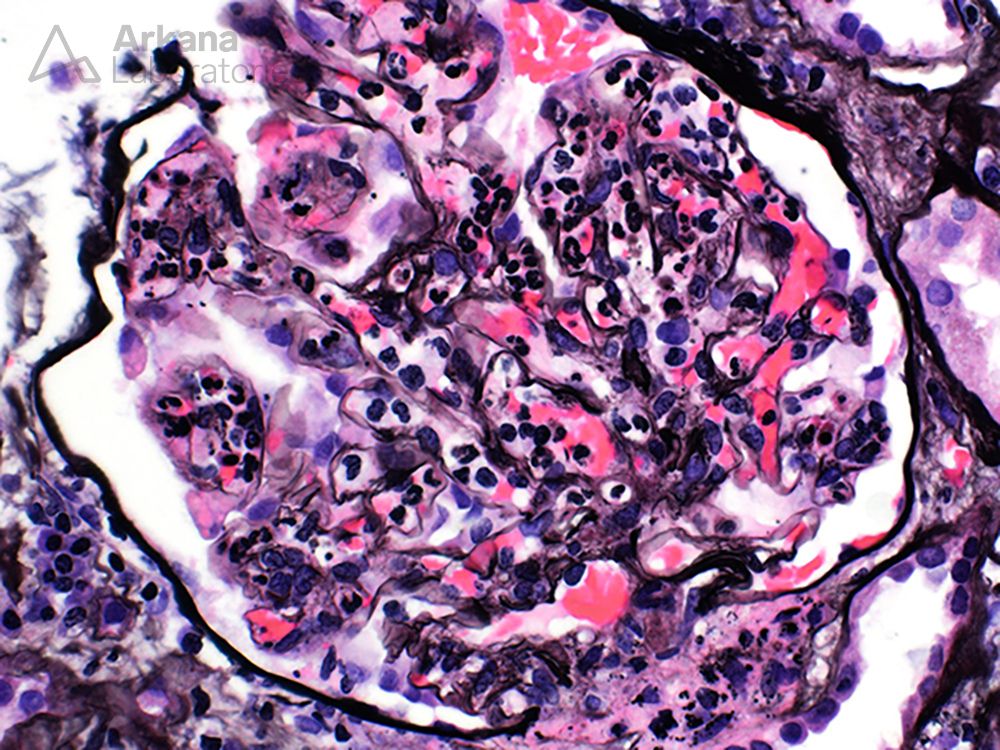Based on the image provided, what would be your leading diagnosis with C3-dominant immune-complex deposition?

The light microscopic image depicts a glomerulus with a diffuse proliferative and exudative pattern of injury characterized by neutrophilic endocapillary hypercellularity. In addition, other glomeruli showed cellular crescent formation with associated fibrinoid necrosis. These glomerular findings in association with C3-dominant immune-complex deposition by immunofluorescence are concerning for an underlying infection; specifically, endocarditis would be of utmost concern. Of note, necrotizing and crescentic GN was the most common histologic pattern of injury seen in a case series by Boils et al. In their series, the most common organisms encountered were S. aureus and Streptococcal species which most commonly affected the tricuspid valve. Of note, close to 1/3 of patients in this series also had a positive ANCA antibody.
Reference:
- Boils CL, et al. Update on endocarditis-associated glomerulonephritis. Kidney International (2015) 87, 1241–1249.
Quick note: This post is to be used for informational purposes only and does not constitute medical or health advice. Each person should consult their own doctor with respect to matters referenced. Arkana Laboratories assumes no liability for actions taken in reliance upon the information contained herein.
